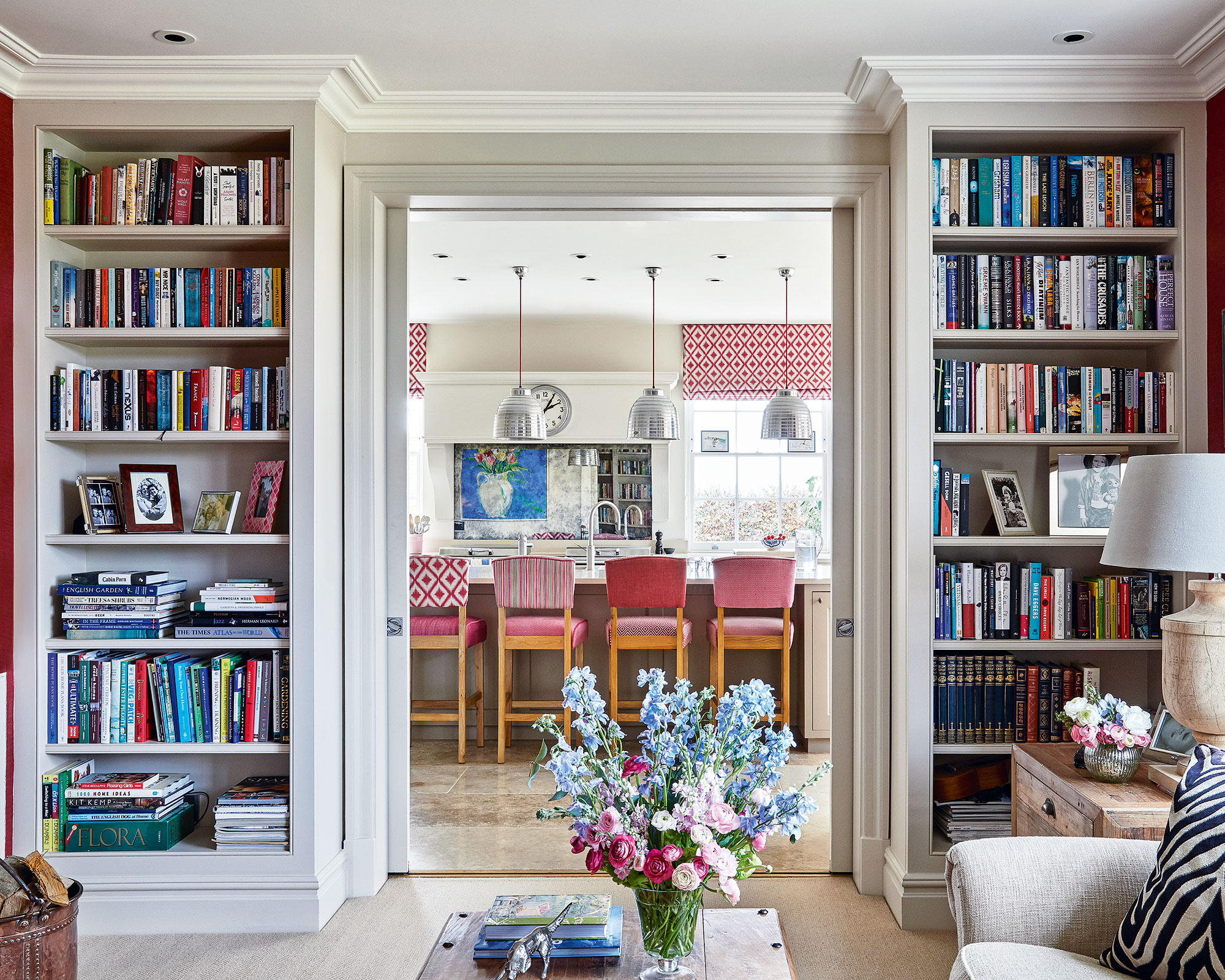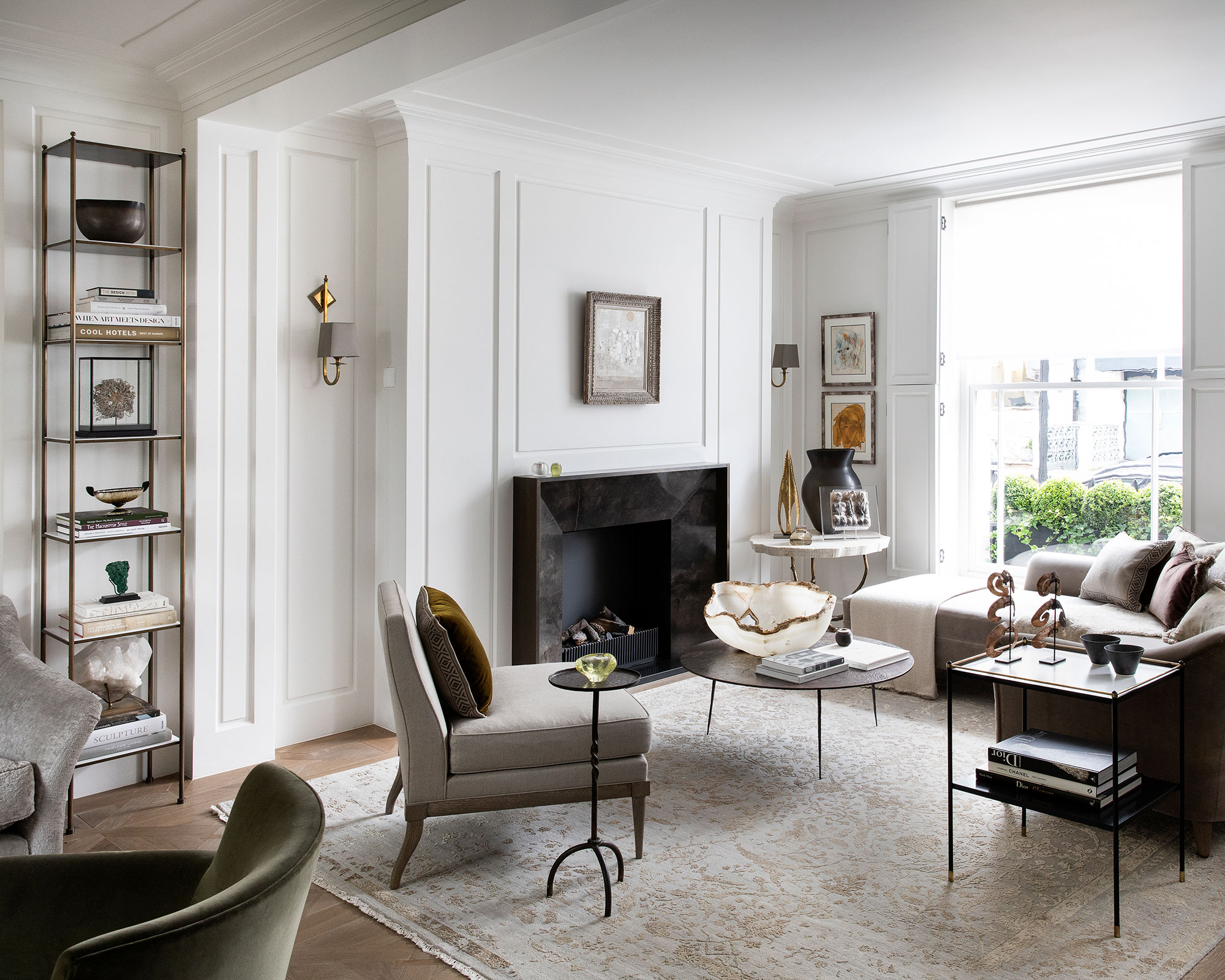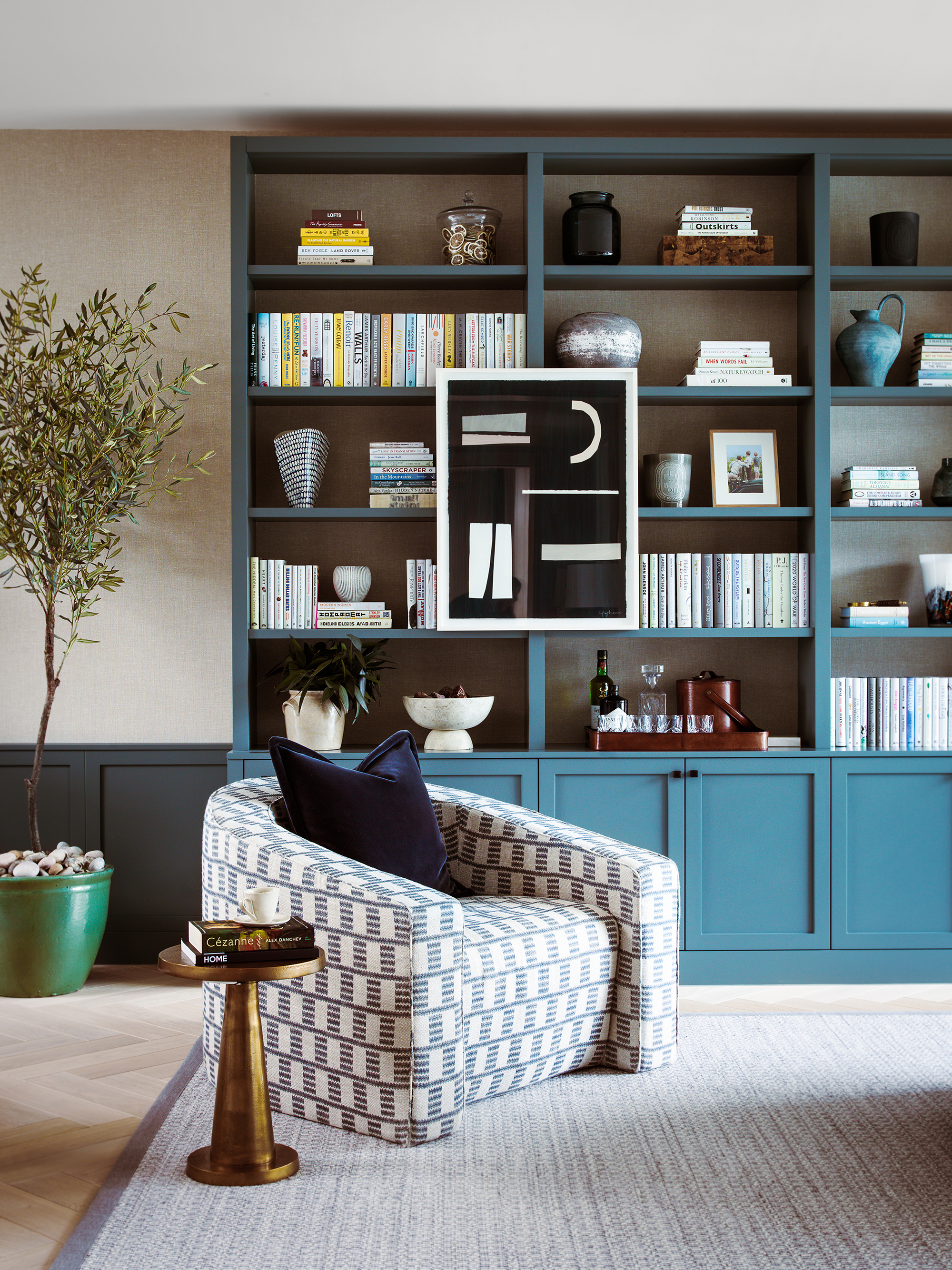Living room shelving ideas – 16 beautiful ways to display books, trinkets and treasured objects
Use these shelving ideas to maximize the space in your living room – without compromising on style

Pippa Blenkinsop

Living room shelving is a great way to add extra storage space to the main room, as well as wow factor.
The right freestanding shelving unit can transform a whole living room. It’s a place to store your collections as well as display your treasures. Whether you want a striking statement unit that will provide a focal point or a more discreet design that will blend in effortlessly, there’s a model out there to suit your space and style.
Below we explore our favorite living room shelving – perfect for adding impact and intrigue to living room ideas and blank walls.
16 living room shelving ideas – maximize space and add interest to a blank wall
'When it comes to designing a living room, efficient storage ideas are one of the most important factors to consider, in order to keep your living room organized and a place in which to relax and spend time with loved ones,' says Emma Deterding, founder and creative director, Kelling Designs.
'Built-in joinery in the form of shelving is ideal for making the best use of oddly shaped rooms, alcoves and recesses as not only does it use the space to its best potential, but it also gives you ample storage for everyday items, as well as decorative elements too.'
From alcove shelf ideas to bookshelf ideas, we’ve put together some stunning living room shelving ideas, and asked the experts for their advice on decorating shelves that are perfect for your here and now.
1. Pick the best materials – and color scheme

The materials and living room color scheme you opt to use for an open shelving unit can really make a difference to the overall scheme. Consider combining pale and dark timbers, or a using a timber and painted finish combination, or even incorporating other materials such as wallpaper or fabric, which can make interesting back panels.
Design expertise in your inbox – from inspiring decorating ideas and beautiful celebrity homes to practical gardening advice and shopping round-ups.
2. Light your living room shelving

Good living room lighting ideas are also key to the success of living room shelving. The advent of LED options has opened up new possibilities for discreet and subtle effects – especially as the fittings themselves are small and no longer run the risk of getting hot. A beautifully lit display shelf will add drama and scale.
3. Go for an open shelving display

Open shelving can create a real statement in a neutral living room and is both practical and visually pleasing. It is also a more economical option than a fully enclosed storage unit. It is particularly suited to small recesses in areas such as either side of a chimney-breast, helping to visually correct uneven proportions.
Kitchens and bathrooms are also areas of the house where open shelving can create an appealing display. Don't be afraid to be bold, mixing fun, witty pieces with functional items that are used every day.
4. Create a statement display

Try mixing large statement pieces with smaller items grouped together. When grouping, consider the shape that the objects create collectively and play with color and form to keep things interesting. Glass lidded pots will look more enticing if filled with colorful props, whether they be functional or decorative.
5. Consider size and appearance

Think carefully about the thickness you want each shelf in your living room to be. If you’re using wood, it pays to choose a chunky option, giving a strong, clean, confident appearance. Think too about whether you’d like shelves with adjustable heights to allow for flexibility.
6. Go for an entirely bespoke option

'Commissioning your living room shelving or built-in cabinet ideas for family rooms from a furniture maker will make the very best use of a space,' says Richard Williams, Richard Williams Furniture.
'A joiner will work around awkward shapes in walls and conceal service pipes or wall boxing. Large pieces will be fixed and scribed to the shape of the wall and skirting, which gives a very neat finish. If shelves are to be adjustable, look for neat and unobtrusive methods of adjustability such as 5mm shelf pegs with a limited number of peg holes for each shelf.’
7. Use living room shelving to create 'zones'

Adequate living room storage is essential in an open plan living room as streamlined spaciousness is key to the look. Sleek, wall-hung shelves that appear to ‘float’ are the smart, modern option and you can also use furniture to divide the space into zones.
Proportion and balance are important considerations – you want to avoid feeling hemmed in by wall-to-wall shelving units.
8. Invest in shelving for books

Notebooks and Kindles may be de rigueur for modern living rooms but most still hold a sizeable collection of good old fashioned books too.
Alcove shelving will successfully house your tomes in a small living room where narrow shelves along one wall – just a book-width deep – will not hamper space. Alternatively, look at arranging such shelves around a doorway for added intrigue.
9. Curate a display that dazzles

Floor-to-ceiling shelving makes an arresting focal point, particularly on a blank living room accent wall. It can be used to enhance the sense of height in the room and create the illusion of space. Painting cabinetry a bold shade can have a dramatic effect, whilst white or off-black are effective backdrops for display.
Create a focal point by ordering items for impact: color-code novels; showcase oversized books and vinyl records front-on to draw the eye; and cluster collections of similar items – ceramics, glassware or trinkets – for a carefully curated look.
10. Consider freestanding shelving

Create instant shelving with lean-to or freestanding shelving units, perfect for adding storage to a free wall space in your living room. A design more suited to contemporary homes – with an easy living feel to them – it’s an ideal solution for those who like to change the layout and décor of their room frequently – and it’s easy to take with you should you move home.
11. Create a focal point behind a sofa

The wall space behind the sofa is a natural place to display a large artwork in a living room – but rather than hang a traditional painting, why not decorate shelves with shapely vessels for a beautiful, alternative focal point? For best results be sure to choose a mix of heights, sculptural shapes and surface textures.
When it comes to styling a shelf, 'it is important to consider the spaces you leave empty just as much as the spaces you fill,' explains Simon Temprell, interior design manager at Neptune. 'Try to avoid lots of small objects and instead concentrate on more considered items that have presence and form.'
12. Mix closed storage with open storage

When planning living room shelving made-to-measure, bespoke joinery is often the best way to make the most of your space, plus consider a mix of closed and open shelving as this will help balance practical storage with space for decorative displays.
‘It’s important to make a space feel relaxed and not sterile or unliveable. Try to create storage for the pieces that don’t need to be on show but make sure to celebrate and show off the things that bring you joy,’ says Camilla Clarke, creative director at Albion Nord. ‘We like to mix high level open shelving with concealed storage. Open shelving to display books, art, photos and concealed storage to hide things that don’t need to be on show.’
If you have a large expanse of shelving hanging a graphic artwork is a great way to conceal eyesores like cables whilst also creating a visual break.
13. Decorate shelving with plants

Ask any interior designer or stylist for their tips for styling shelves and plants would be near the top of the list. Not only do they bring numerous benefits for health and wellbeing, plants and greenery brings interiors to life and can look beautifully decorative too.
'Plants will bring an element of softness and freshness to any shelf, especially those that trail,' says Simon Temprell. 'Succulents have architectural style and demand very little attention, so they can be useful for filling the gaps where objects feel a little too rigid.'
Of course when it comes to choosing house plants for shelves it all depends on their specific light needs, but adding them to a living room partition, even if it's just faux plants, can be a really handy tool for helping to soften harsh angles and bring color and interest while keeping the space feeling open and airy.
14. Choose floating shelves

If you're looking to create a minimalist living room or have a small living room then consider floating shelves.
Fixed to the wall with hidden brackets, floating shelves are perfect for creating an airy, streamlined look as demonstrated in this space by Kitesgrove, and will help create the illusion of space.
15. Opt for a display cabinet with shelves

Fixed shelves can limit living room layout options, so if you're looking for a more flexible storage solution consider a glazed cabinet, not only are they easy to reposition, they help protect collectibles and prevent the need for constant dusting, too.
'A glass fronted cabinet is far more versatile than built-in storage – it can be easily moved between rooms and taken with you if you move home,' says Dani Taylor, product and creative director at Cox & Cox. 'A combination of glass fronts and solid doors is often most desirable, so you can really get the most of it.'
If you're using your cabinet to display china, consider a using vibrant paint idea on the interior to make the pieces really pop.
16. Add alcove shelving

Fitting floating shelves into alcoves is a brilliant way to create additional storage or display space without encroaching on valuable floor space, plus, it can be a lovely way to highlight an architectural feature within a room.
Alternatively, recessed shelving can be fitted retrospectively into a room. While this will reduce the overall footprint, the result will be a streamlined space which feels airy and spacious.
Made from solid timber, these alcove shelves help bring texture and warmth to this white living room design by Kitesgrove, as do the metallic wall lights and marbled fireplace.
Where should shelving be placed in the living room?
If you are planning open shelving, work to the full proportions of the living room to create maximum impact. A floor-to-ceiling unit, with sturdy, adjustable shelves and minimal fixtures will offer a strong, enticing look and act as an excellent anchor and display.
In smaller rooms, including living areas, shelving can be an effective way of creating storage without appearing to eat too much space. Consider the look you are opting for, whether traditional, featuring detailed joinery, or sleek and unfussy with a contemporary edge. And think carefully about what you are displaying – this will ensure each shelf is made to allow sufficient depth and to carry weight without warping.
How do I organize my living room shelves?
'Keeping your living room shelves organized is vital,' says Anne Haimes, Anne Haimes Interiors. 'Items placed in groups or in lines of threes, fours or fives will prevent the shelves looking untidy. When choosing the overall look, decide if you want the shelves to be made in a material which is a statement in itself, or if you want them to have a less prominent role, allowing your display to do all the talking.’
‘More and more, we’re seeing shelving used as a feature in a room,’ says Ian Weddell, USM Modular Furniture. ‘In loft apartments, it can be used as a room divider idea to 'zone' a large space; and shelving can be used to display not only books, but also vases of flowers, sculptures or artwork.’

Jennifer is the Digital Editor at Homes & Gardens, bringing years of interiors experience across the US and UK. She has worked with leading publications, blending expertise in PR, marketing, social media, commercial strategy, and e-commerce. Jennifer has covered every corner of the home – curating projects from top interior designers, sourcing celebrity properties, reviewing appliances, and delivering timely news. Now, she channels her digital skills into shaping the world’s leading interiors website.
- Pippa BlenkinsopContributor